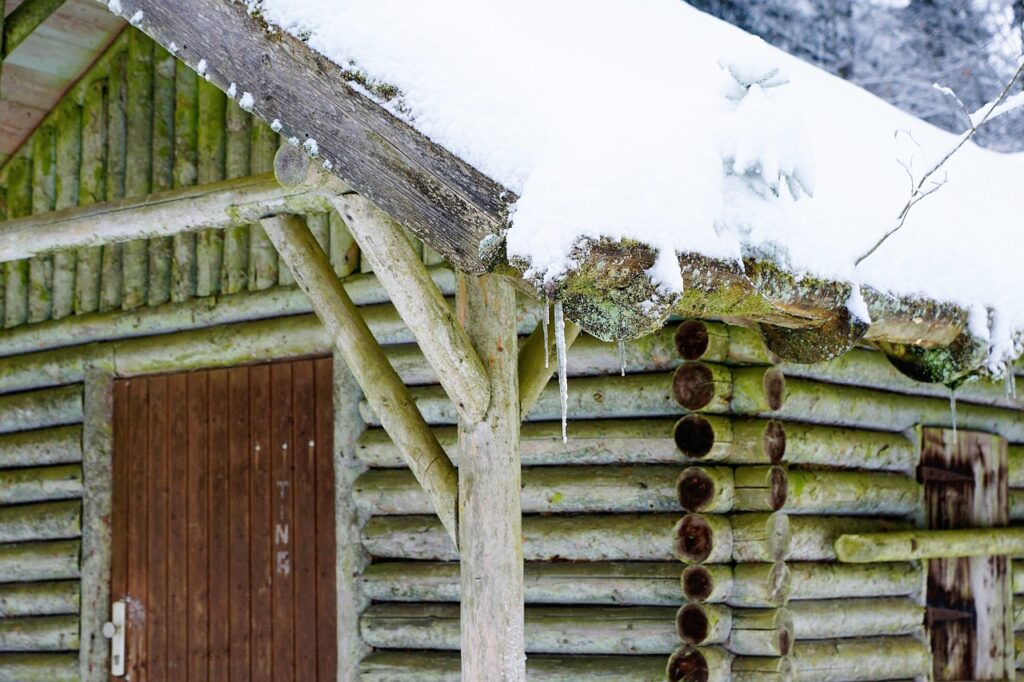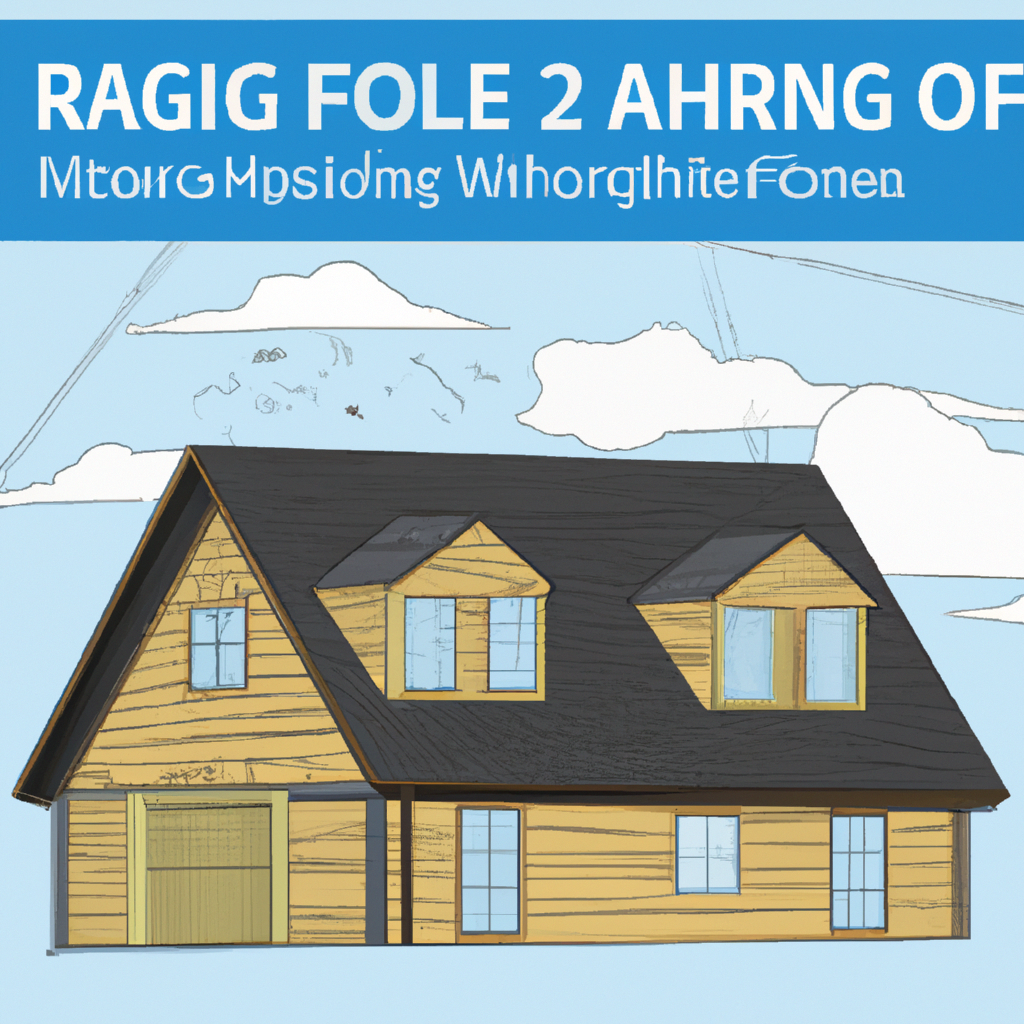Are you curious about the different types of roofs that exist? Well, look no further! In this article, we will explore the four basic roof types and their characteristics. Whether you are a homeowner considering a roof replacement or simply interested in learning more, this article will provide you with all the essential information you need. So, let’s jump right in and discover the diverse world of roof styles!

Gable Roof
Definition
A gable roof is one of the most common and recognizable roof types characterized by its triangular shape. It consists of two sloping sides that meet at a peak or ridge, forming the classic gable shape. This roof type is known for its simplicity and versatility, making it a popular choice for residential and commercial buildings alike.
Features
One of the prominent features of a gable roof is its triangular shape, created by the sloping sides that meet at the ridge. This shape allows for efficient water and snow runoff, preventing accumulation and potential damage. Gable roofs also often have a vertical end wall, known as a gable end, which adds aesthetic appeal to the structure.
Advantages
Gable roofs offer several advantages that make them a preferred choice for many homeowners and builders. Firstly, the steep slope of a gable roof allows for efficient shedding of rainwater and snow, reducing the risk of leaks and structural damage. Additionally, the design of a gable roof provides excellent ventilation, allowing hot air to rise and escape through the ridge, keeping the interior cool. The simple construction of gable roofs also makes them cost-effective and relatively easy to build.
Disadvantages
While gable roofs have many advantages, they also come with a few drawbacks to consider. One potential disadvantage is their vulnerability to high winds. The vertical gable ends can create uplift forces during storms, making gable roofs more susceptible to damage. Adequate bracing and reinforcement are necessary to enhance their wind resistance. Another limitation of gable roofs is their limited attic or storage space due to the sloping sides. This can be addressed by incorporating dormers or using truss construction methods.
Hip Roof
Definition
A hip roof is another popular roof type that features slopes on all four sides, meeting at a central ridge. Unlike a gable roof, a hip roof does not have vertical gable ends. Instead, the slopes of a hip roof extend down to meet the exterior walls of the building. This design provides added stability and resistance to wind and other natural elements.
Features
The main feature of a hip roof is its four sloping sides, which evenly distribute the weight and forces across the structure. Each side of a hip roof has the same pitch and length, creating a symmetrical appearance. Hip roofs often include eaves, which are the overhanging edges at the bottom of the roof, contributing to the overall aesthetic appeal.
Advantages
One of the primary advantages of a hip roof is its excellent stability. The sloping sides and lack of vertical ends make hip roofs more resistant to strong winds and other weather conditions compared to gable roofs. The design also allows for increased attic space and provides excellent options for adding dormers and extra living areas to the building. Hip roofs are also versatile in terms of architectural styles, as they can be adapted to suit various designs, from traditional to contemporary.
Disadvantages
Although hip roofs offer great stability, they do have some disadvantages as well. One drawback is the increased complexity of construction compared to gable roofs, which can result in higher labor and material costs. The additional slopes of a hip roof also make it more susceptible to leaks if not properly installed or maintained. Moreover, the presence of multiple sloping sides can make roof repairs and maintenance more challenging and time-consuming.

Flat Roof
Definition
As the name suggests, a flat roof is characterized by its horizontal or nearly horizontal surface. Unlike gable and hip roofs, flat roofs have minimal slope or pitch and are commonly found on commercial buildings, modern residential structures, and industrial facilities.
Features
The key feature of a flat roof is its low pitch, often ranging from 1/4 to 1/2 inch per foot of horizontal run. This slight slope allows for adequate drainage but still maintains the overall flat appearance. Flat roofs are typically constructed using reinforced concrete, asphalt, or other suitable materials that provide both durability and water resistance.
Advantages
Flat roofs offer various advantages depending on the specific needs of a building or structure. Firstly, the simplicity of their design makes them easier and quicker to construct, resulting in cost savings during the building process. Flat roofs also provide additional usable space, as they can be transformed into rooftop gardens, recreational areas, or even outdoor living spaces. They are also easier to access for maintenance, repair, and installation of equipment such as solar panels or HVAC units.
Disadvantages
Although flat roofs have their advantages, they also come with a few disadvantages to consider. One major concern is their limited ability to shed water efficiently. The minimal slope can lead to water pooling and potential leaks if not properly drained. This requires regular inspection and maintenance to ensure proper functioning of the roof. Additionally, the lack of slope can make flat roofs more susceptible to damage from heavy snow loads, as the weight is not easily dispersed.

Shed Roof
Definition
A shed roof, also known as a single-slope or mono-pitched roof, is a roof type that slopes in only one direction. It is often used for sheds, small storage buildings, and modern architectural designs, providing a minimalist and contemporary aesthetic.
Features
The main feature of a shed roof is its single slope, which can be angled from the front to the back or from one side to the other, depending on the desired architectural style and functional requirements. Shed roofs are simple in design, with no ridges or valleys. They are typically supported by beams or inclined walls, and the angle of the slope may vary based on climate considerations and aesthetic preferences.
Advantages
Shed roofs offer several advantages that make them a popular choice for certain structures. One advantage is their simplicity, which results in lower construction costs compared to more complex roof types. Shed roofs also provide excellent water runoff and snow shedding capabilities, as the single slope allows precipitation to flow easily off the roof. This reduces the risk of leaks and structural damage. Additionally, shed roofs offer flexibility in architectural design, allowing for creative use of space and integration with surrounding structures.
Disadvantages
Despite their benefits, shed roofs have a few disadvantages to consider. One limitation is the reduced overall ceiling height when compared to other roof types. The single slope design can limit the usable space in certain areas of the building, particularly near interior walls. Shed roofs may also require additional insulation and proper ventilation to prevent moisture buildup and ensure energy efficiency. Furthermore, the absence of ridges or valleys can result in the accumulation of debris, requiring regular maintenance and cleaning.
